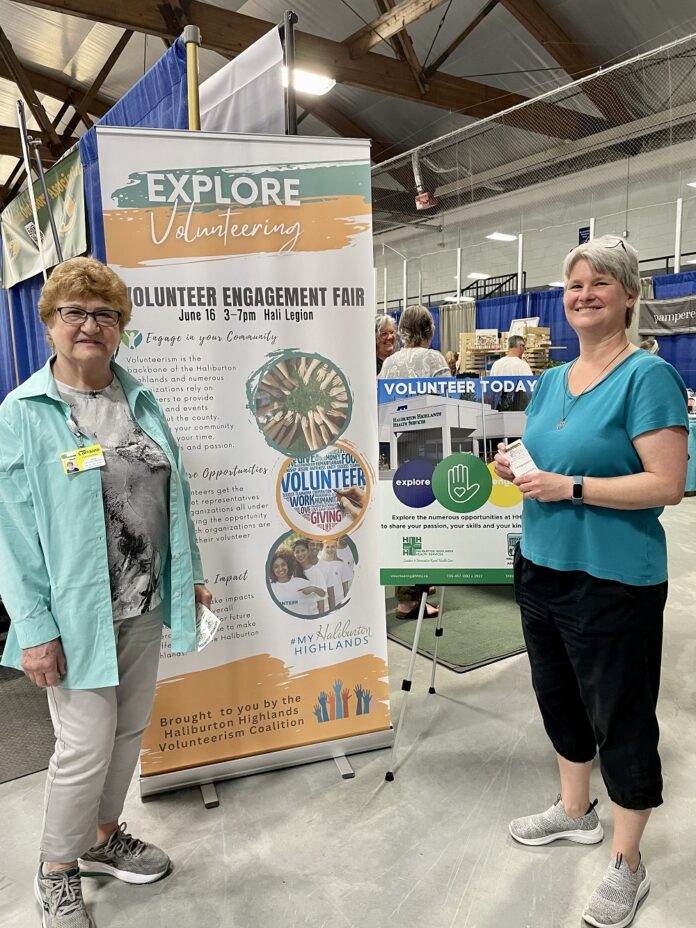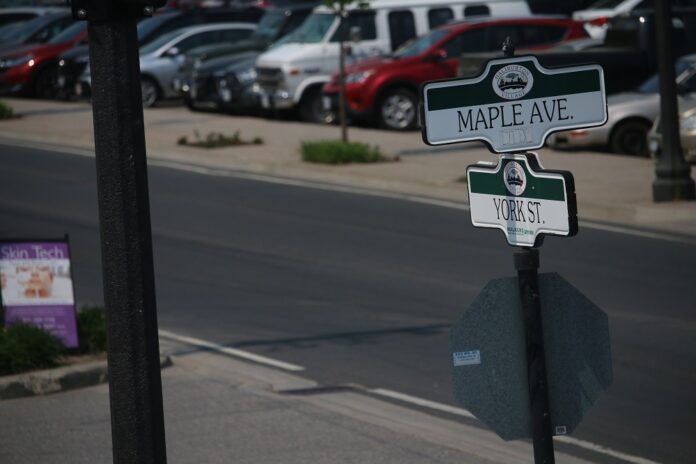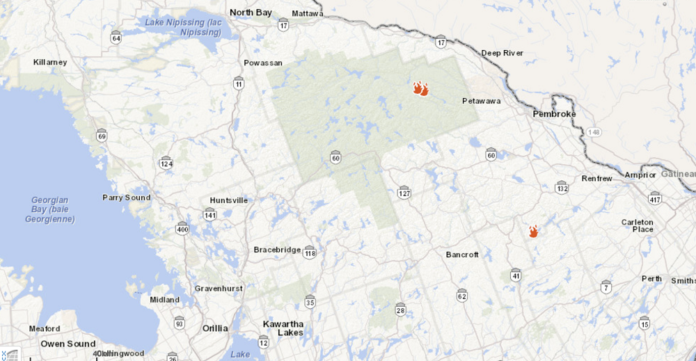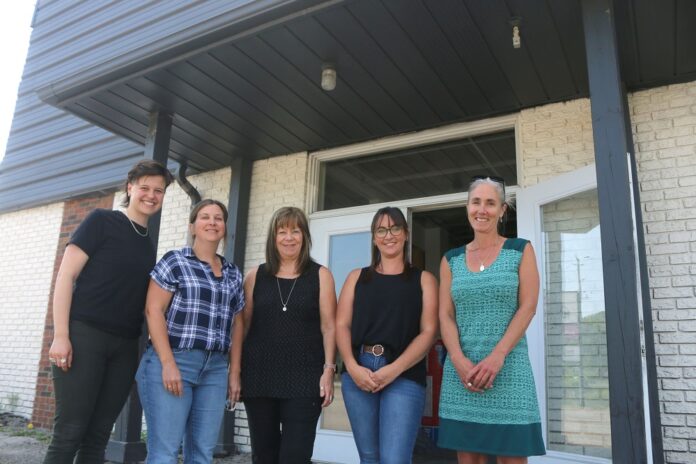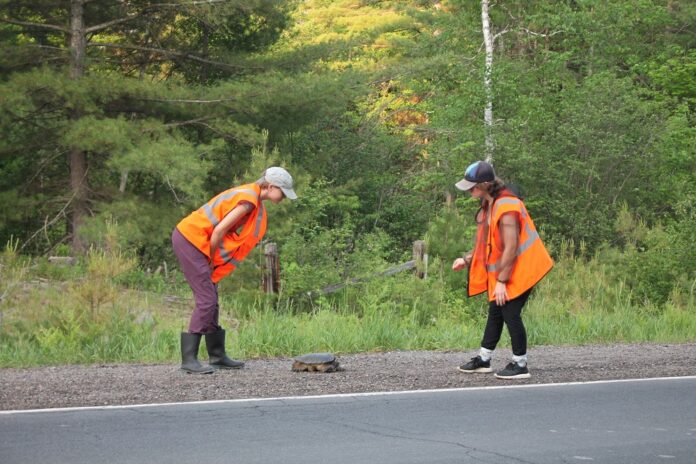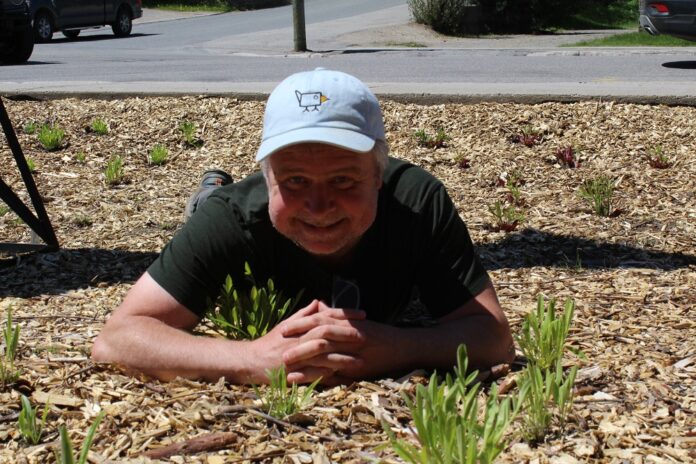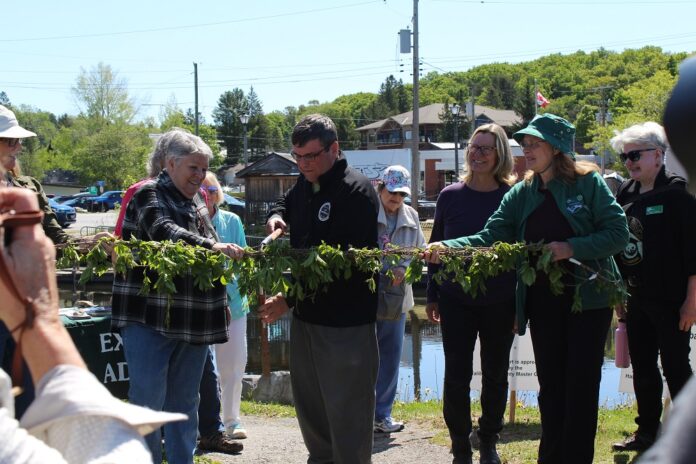It’s a muggy Friday, the sky threatening rain, as Mel Abberger spots a turtle on a road in Highlands East.
“That’s a Blanding’s,” she says with a tense voice, bringing the Subaru to a stop on the shoulder, and hitting the hazards. She slumps a little towards the steering wheel, as if steeling herself for what is to come.
The Blanding’s is smashed, its shell completely busted and cracked eggs spilling out of its innards. There is a pool of blood beneath it.
“Please don’t be alive,” Abberger says, as despite her love of turtles, she cannot stand the thought of this female being in so much pain.
But Turtle Guardian staffers have a job to do.
Setting emotions aside, Abberger and Emily Smart look for signs of life. They gingerly poke the turtle. What’s left of one back leg slightly twitches. It doesn’t mean she is alive. Turtles die very slowly. Their hearts can beat for more than two days before they succumb.
Abberger calls Turtle Guardian’s founder, Leora Berman, who is also in the field. Berman instructs her to drive the turtle up the road, to where she herself is in the process of bandaging a male Blanding’s that has been hit by a vehicle.
Abberger does the best she can to scrape up the turtle, cautiously trying not to damage any salvageable eggs. The Blanding’s is placed in a plastic bin. The mood in the car is sombre.
The Blanding’s Berman is working on has a chance as no internal organs are spilling out. But looking at the female requires a call to Jeff Hathaway from Scales Nature Park to ask if he thinks she needs to be euthanized.
“I think she’s gone,” Berman says into the phone. “Her front legs are not responding; one egg is hanging out. She’s in about 20 pieces.”
An afternoon with the Turtle Guardians
A decision is made she may have a viable egg, one chance of a new life from her crushed mother, so Berman takes her for a later egg extraction at headquarters on Gelert Road.
Abberger and Smart get back in the car. There is a post-mortem. Not for the turtle, but for them. Covering a large area, they often wonder what would have happened if they hadn’t stopped for the turtle before. Or the turtle before that one. Would they have been in time to save the Blanding’s?
Because the Blanding’s are “super at-risk, it’s somehow worse,” Abberger says. “Could we have prevented that?” But Smart reacts with emotion. “You know who could have prevented that? The people who hit her.”
It’s another wild night in June, as turtles are on the move in Haliburton County.
Turtle road crew
Driving out for a 4 p.m. shift, Abberger said, “I’ve been waiting since last September to handle some more wild turtles.”
Turtles are more comfortable moving in the rain, and slightly cooler temperatures, as they are not as much at risk of dehydration.
They find a Painted and it’s research time. Despite it peeing on them, they take measurements of the carapace (upper shell) and the plastron (under shell) and weigh it. They see if it’s gravid, or has eggs, by poking a finger under the shell. They also note any abnormalities. They record the time, location, air temperature, and weather. When they’re done, they mark it with a code, take a photo, and release it.
Blanding’s, because they have a distinct underbelly shell, get a name for tracking. Smart named her first one, Poppy, on June 1.
On the highway between Minden and Kinmount, the two are just finishing walking the shoulders of a wetland when a Painted turtle is spotted nesting. They quickly retreat about 10 metres so as not to spook her. Smart stays to guard the nest, while Abberger heads back up the road.
She comes upon a badly injured Painted and calls Berman for advice. “If there’s no organs outside, there’s hope there. She can make it. Try and piece her shell together. Dry her up,” Berman says.
Put to work
I’m suddenly no longer an observer. As Abberger triages the turtle, I drive back to check on Smart, who emerges with two more Painted turtles in her hands. I help her to process them. I then leave Smart at the nest, and return to Abberger. She’s done her best to patch the Painted but is now at a nest site digging for eggs.
She jumps in the car to Kinmount to meet up with a turtle taxi to Peterborough’s Ontario Turtle Conservation Centre. As she is driving away, she yells back to me and I see a Painted crossing the highway. I quickly run to help it cross the road.
Then, a driver stops to tell me there is a large Snapper at the side of the road. It’s my turn to nest sit. Standing there for the better part of an hour, I feel adrenaline pumping.
Eventually, Abberger returns. We mark the site of the Snapper, who could be laying for hours, and go to get Smart.
“This is a crazy night,” says Abberger, admitting to her stress. “A lot all at once.” On this night, there are only three crews, or six people on the road, including Berman. They are patrolling hundreds of square kilometres.
By now, it’s getting on dusk. We’re all running on adrenaline and scratching numerous bug bites. We stop for other turtles. Live ones, including a big Snapper on the 503 in Highlands East, are processed. Dead turtles are removed from the road so the patrol doesn’t stop for them again. There’s little time to mark these deaths but the mutilated bodies are at least put back to the earth. Nests are checked for eggs. In the fog, Abberger has to brake quickly when a moose walks out in front of the car.
The last call is down a winding cottage road in Highlands East. Someone had called in a nest site. When the crew arrives, it’s pitch black and there is sand everywhere. They grab flashlights and wander but realize they’ll never find the nest. About 11 p.m., it’s time to call it quits.
Though they should be exhausted, from the pace and trying to see in the dark, the two are strangely awake, chalking it up to adrenaline.
Reflecting on the night, Abberger says she can’t help but wonder what could have been done differently but, “I try really hard to focus on the saves because you just can’t be everywhere at once. You have to focus on the good you can do and hope that’s enough.”
ABBERGER AND SMART’S TIPS:
• Brake and stop for turtles – help them cross the road. If worried about Snappers, you can learn how to move them from the Turtle Guardians. Don’t assume a turtle is dead. They can survive traumatic injuries. Eggs can also be harvested. For critical care, call the Ontario Turtle Conservation Centre 1-705-741-5000.
• Reconnect with nature – turtles help new plants grow and ecosystems thrive; they bring new seeds and the necessary plant fertilizers across wide expanses as they travel between ecosystems, through their droppings. They also remove parasites from the water. For more on the Turtle Guardians, see turtleguardians. com; call 1-705-457-1222 or email info@turtleguardians.com. They are headquartered at 6712 Gelert Rd.


